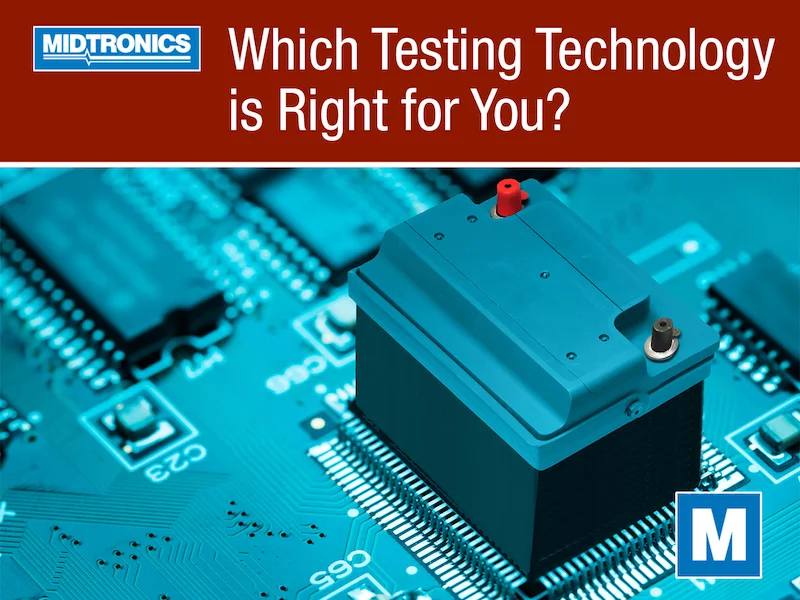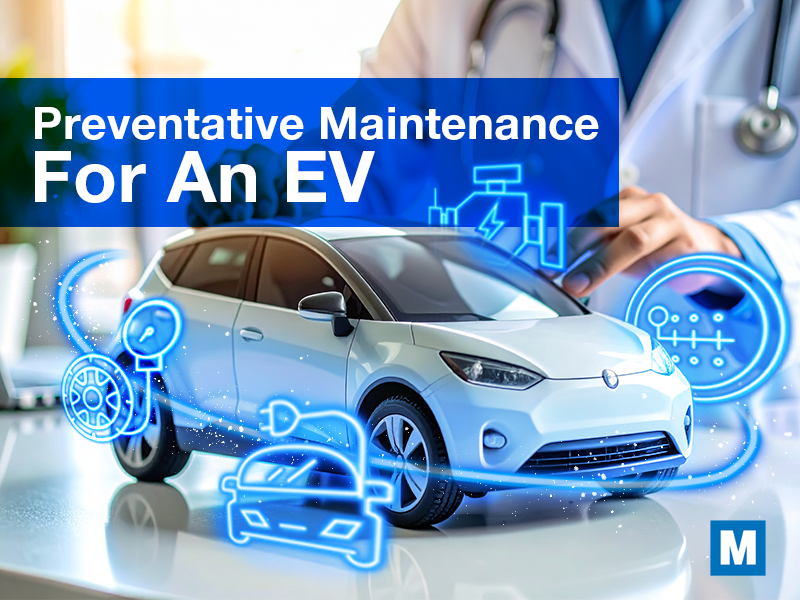In the automotive service and repair industry, one of the most common repairs that technicians perform is a battery replacement. Every passenger vehicle has a 12-volt battery, and most heavy-duty vehicles and large equipment contain 12- or 24-volt batteries too. It’s a fundamental component because absent a properly functioning battery, it’s difficult or impossible to use it.
Battery tests are used to diagnose bad batteries as well as preventative measures to check if a battery is healthy. But not all testers are created equal. They contain different technologies to check different aspects of a battery’s health. So, which battery tech should your equipment have?
In this article, learn about the different technologies, how the results can differ, and which test technologies are best suited for different applications.
What Battery Test Technologies Are Available?
A battery test does much more than simply identify a battery’s state of charge through a voltage measurement. It goes one or more levels deeper to get the truest representation of a battery’s health.
Conductance Technology – Testing Cranking Health
The most basic test technology available is conductance technology. It’s found on virtually every battery test device that’s been developed beyond a simple DVOM. This technology is intended to test a battery’s ability to turn over an engine, firing it up so the car can run and drive.
Conductance technology places a micro load on the battery for a very short period of time – only a few seconds. The voltage response is measured. This conductance measurement correlates to the battery’s cold cranking amperage, which is critical for starting an internal combustion engine. Without running extensive discharge tests, conductance is used, together with other battery information, to rapidly and safely determine a battery’s ability to start the engine.
Conductance Profiling – Testing Reserve Capacity Health
A different test is required to diagnosis the battery’s health beyond the basic ability to crank the engine over. Vehicles today are much more heavily accessorized than in past generations, and the constant electrical draw on the system requires an additional step in the diagnostic process. Think about systems like auto start-stop, lane departure warning, comprehensive infotainment systems, and the like.
The test for ongoing vehicle load support is called conductance profiling, and it checks a battery’s ability to support loads on the battery beyond the starting sequence. You might be under the impression that if a battery contains the required energy to turn the engine over, it’s fine while the engine is already running, but that’s not always true. A high-amperage load over a short time has a different effect than several small loads over a long time frame, which is why conductance profiling is helpful.
This type of testing protocol applies a larger load over a longer time than conductance– a 10-amp load over approximately 60 seconds. It analyzes the response of the battery under load to determine if the battery exhibits signs of reserve capacity below 50% of it’s rating.
To illustrate, imagine a cup of water that can be emptied and refilled to the same capacity time and time again. But if you fill it halfway with plaster, it can only be filled up with half the amount of liquid as the cup was designed.half liquid. The same type of problem can happen with a battery where particles settle to the bottom and decrease the amount of usable storage there is, thus reducing the battery’s reserve capacity.
An additional benefit of Conductance Profiling: other tests often need a mostly or completely charged battery. Conductance profiling is accurate at a much lower state of charge – often down to 9V – to enable accurate diagnostics without requiring the technician to first charge the battery.
Dynamic Charge Acceptance – Testing Charge Acceptance Health
Another aspect of battery health that can often go untested during the diagnostic process is charge acceptance. Where other tests determine the battery’s ability to dispense energy on demand, charge acceptance evaluates its ability to replenish its energy stores. In some instances, the battery may not be able to absorb energy at the rate it was designed. This is an issue with vehicles designed to increase fuel efficiency by minimizing the time spent engaging the alternator and charging the battery. In these circumstances, the battery may not return to its full state of charge as quickly as is should, leading to the battery state of charge diminishing over time. This can result in performance related issues like start-stop functions turned off, and in some instances no-start siutaions.
Dynamic Charge Acceptance technology takes on average 5 minutes to diagnose the battery. The battery is first tested using Conductance Profiling Technology (60 seconds) to determine the batteries capacity performance. The battery is monitored while loaded with 300A to simulate a start event (60 seconds). A charge is then applied to the battery and its monitored to determine its ability to accept charge (2-3 minutes).
Other Test Technologies
Other tech considerations for battery testing equipment include what you might consider peripheral systems. VIN scan technology helps shops ensure the right test results are recorded for the right vehicle. It’s extremely useful in warranty situations especially, helping manage compliance with the OEM or battery manufacturer.
Also, a printer may or may not be of importance. If a hard copy of a warranty code is mandatory, then a printer is a must. However, not all shops need a printer – you might show the results to the customer on the device, or you might integrate a network-connected tester with your POS or CRM, if the manufacturer supports that capability.
Which Technologies are Best for Different Applications?
Which battery tester is right for your shop? There’s no hard-and-fast formula since every repair facility is different. Conductance-only testing might not be sufficient to capture a battery’s true state of health. Since it doesn’t check for conductance profiling or charge acceptance, you can miss issues that should result in decisions like Replace Battery and Bad Cell – Replace, or misinterpret results like Good – Recharge or Charge and Retest. More granular results help sell more batteries and build more trust with customers.
Here are a few guidelines to think about.
A conductance-only tester might be sufficient if:
- Your technicians usually work on older cars that don’t have newer technology.
- The battery tester is going to be deployed in an express lane, where quick testing is vital and the car drove in without noticeable symptoms.
A tester with conductance profiling and charge acceptance technologies might be better if:
- It’s going to be used on deeply discharged batteries.
- You’re performing in-depth diagnostics for customers experiencing performance issues
- The technicians are working on newer vehicles reliant on a 12-volt battery for start-stop and/or auxiliary functions.
At Midtronics, battery test equipment that is equipped with conductance technology includes the CPX, DSS, DCA, MDX, and EXP series. For conductance profiling, look to the DSS and CPX series of testers as well as the DCA series of diagnostic chargers. And for charge acceptance, the DCA series is your best bet with all three technologies available, testing start events (cranking health via Conductance), vehicle load support (reserve capacity health via Conductance Profiling), and cycle applications (charge acceptance via Dynamic Charge Acceptance technology) in under five minutes.




